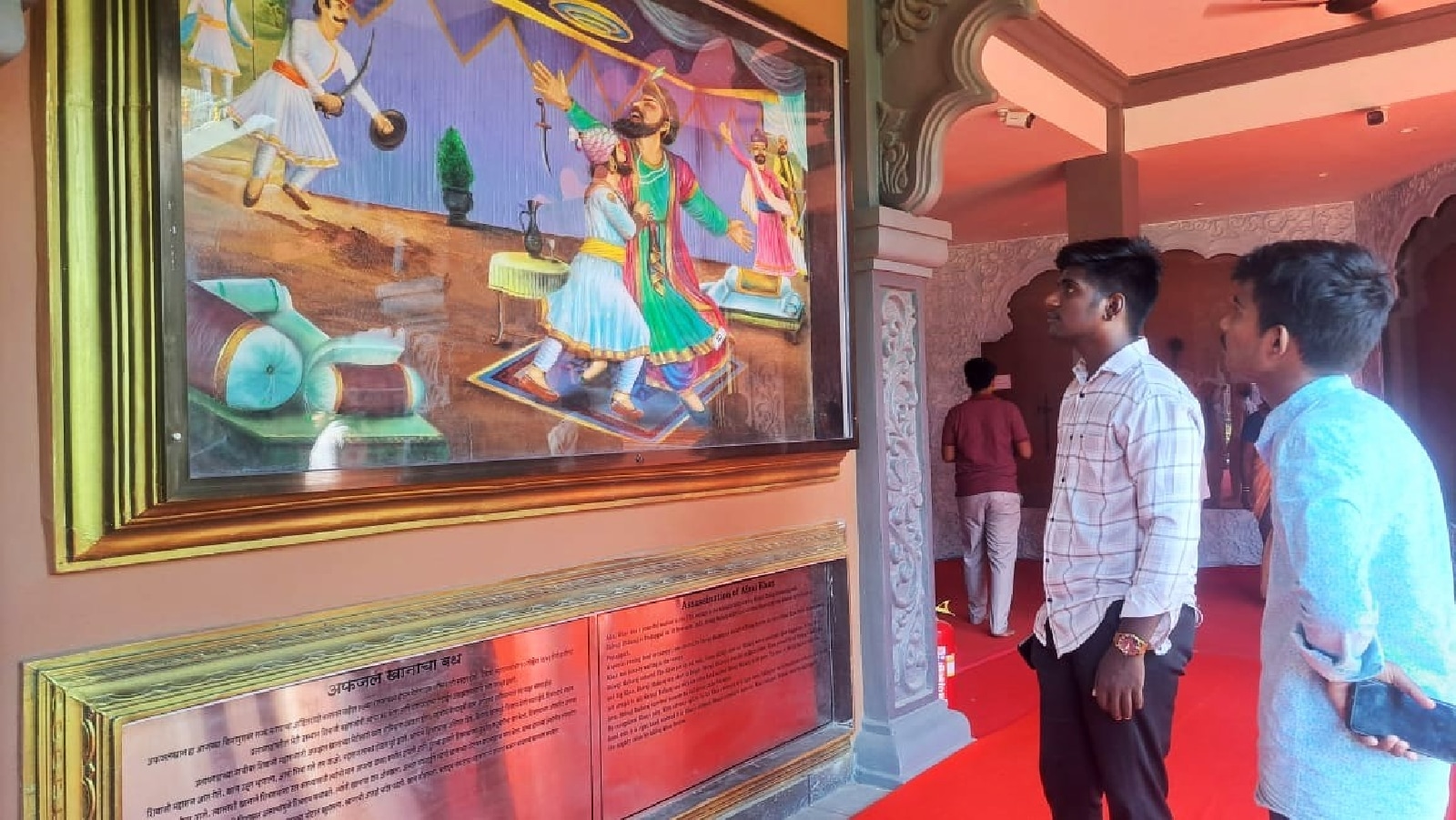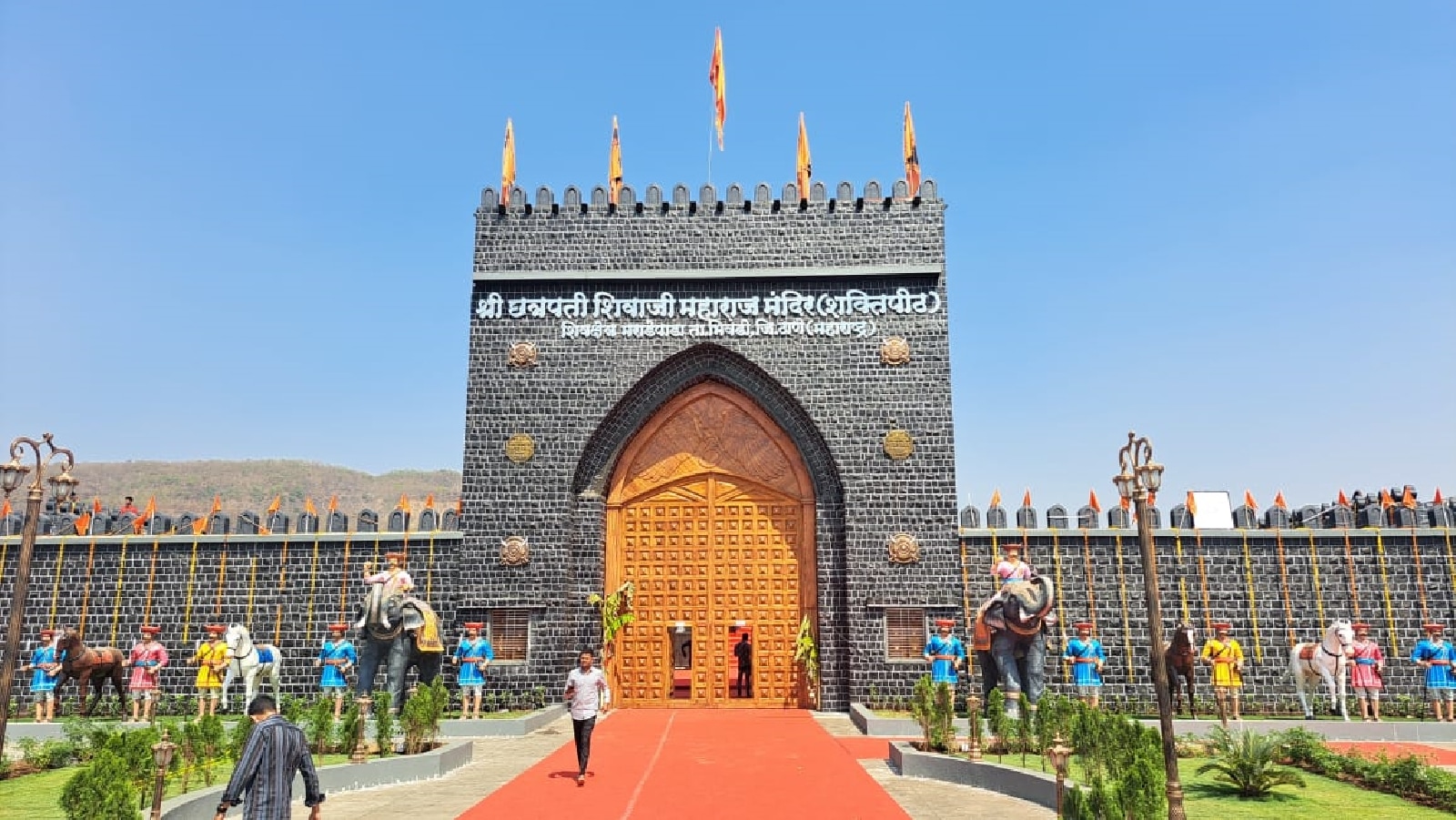7 things you need to know about the new Chhatrapati Shivaji Maharaj temple in Maharashtra
Here’s all you need to know about the first temple dedicated to Chhatrapati Shivaji Maharaj in Maharashtra.
 The temple is designed by architect Vishal Vijaykumar Patil. (Express Photo)
The temple is designed by architect Vishal Vijaykumar Patil. (Express Photo)Maharashtra Chief Minister Devendra Fadnavis on Monday (March 17) inaugurated the state’s first-ever temple dedicated to Chhatrapati Shivaji Maharaj in Thane district’s Bhiwandi taluka.
Here are 7 things you need to know.
- 01
Second Chhatrapati Shivaji Maharaj temple in India
Built by the trust Shivkranti Pratishthan, this is the first temple dedicated to the great Maratha warrior in Maharashtra, but the second in India. The first temple dedicated to Chhatrapati Shivaji Maharaj is in Srisailam, Telangana.
- 02
Foundation laid in 2017
The temple was inaugurated by Fadnavis on the occasion of Chhatrapati Shivaji Maharaj's birth anniversary, as per the Hindu calendar. Its foundation was laid in 2017, and actual construction began in March 2018 following a bhoomipujan ceremony by Eknath Shinde, now the deputy CM of the state who was then the Thane District Guardian Minister and Urban Development Minister.
- 03
Spread across 2,500 sq feet
Inspired by the architecture of Chhatrapati Shivaji Maharaj’s forts, the temple is spread over an area of 2,500 sq feet, with a fort-like boundary wall covering an additional 5,000 square feet. The Shivkranti Pratishthan, which built the temple, was founded by a local construction magnate and Chhatrapati Shivaji Maharaj devotee named Raju Chaudhary. It was Chaudhury who gifted this land to the trust.
- 04
6.5 ft blackstone Chhatrapati Shivaji Maharaj idol
The temple’s central attraction is the 6.5-foot krishnashila (blackstone) statue of Chhatrapati Shivaji Maharaj, which was sculpted by renowned Mysore-based artist Arun Yogiraj. This is the same man who sculpted the 22-foot statue of Netaji Subhas Chandra Bose at India Gate, the 12-foot high statue of Aadi Shankaracharya in Kedarnath, and the idol of Ram Lalla at the Ram Janmabhoomi temple in Ayodhya.
- 05
Inspired by Chhatrapati Shivaji Maharaj's forts
Designed by architect Vishal Vijaykumar Patil, the temple borrows from Chhatrapati Shivaji Maharaj's forts — it comprises a boundary wall, fort-like bastions, and a grand-entrance. The pillars of the mandir sabha mandapam fortifications are finely carved, and with attractive mahirap arches. The main entrance is 42 feet high, with a teakwood gate that is 27 feet high and 17 feet wide. The structure has been built using reinforced concrete, brickwork, as well as real stone.
- 06
36 sections with murals
The lower part of the fort has 36 sections which contain murals measuring 9x6 feet. Key moments of the life of Chhatrapati Shivaji Maharaj are shown in these murals. Besides this, there is also a museum of historical weapons and armour in the complex. A garden surrounds the temple.
- 07
Potential boost to region’s development
The temple trust is hopeful that the Chhatrapati Shivaji Maharaj temple will attract pilgrims and tourists from all over Maharashtra and elsewhere in the country. This they believe will provide much needed employment for locals. The trust currently seeks the government’s help in developing the area as a tourist destination, including building a hostel facility around the temple and erecting a police chowki next to it. Fadnavis has said that the temple will soon be granted the status of a pilgrimage site.
|
HOW TO GET THERE Currently, there is no public transport available to reach the temple. The nearest railway stations are Bhiwandi and Vasind, which are 17 km and 25 km away respectively. One can reach the temple using a personal vehicle, or hire an auto-rickshaw or private vehicle for the journey. |
- 01
- 02
- 03
- 04
- 05










































